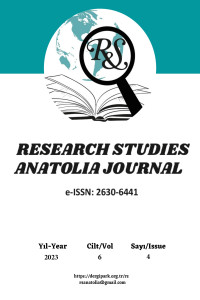DOĞA BİLİMLERİNDEN SOSYAL BİLİMLERE: ÖRGÜTSEL ENTROPİ
FROM NATURAL SCIENCES TO SOCIAL SCIENCES: ORGANIZATIONAL ENTROPY
Author(s): Hatice Gökçe DEMİRELSubject(s): Methodology and research technology, Management and complex organizations, Policy, planning, forecast and speculation, Sociology of Culture
Published by: Arif YILDIZ
Keywords: Entropy; Organizational Entropy; Organization Theory;
Summary/Abstract: The laws of thermodynamics are the most fundamental and unshakable laws of natural sciences. Social systems, like natural systems, are subject to entropy, the second law of thermodynamics. Entropy, in natural sciences, means that spontaneous things increase the disorder in the universe. In social sciences, people can create mechanisms that can resist entropy through consciously created structures, usually around a purpose, and processes that facilitate the flow of energy and information between these structures. Organizations create order by giving people a purpose, turning their energy and time into production, and reducing uncertainty with predictable behavioural patterns. However, organizations, like all systems, cannot escape entropy. The aim of the research is to identify at the organizational level the situations that increase and decrease entropy through the elements that create order in organizations (purpose, structure, communication-interaction-information). In this research conducted at the conceptual level, inductive hypotheses were put forward regarding the factors that increase and decrease the entropy of organizations. The lack of overlap between the goals of the upper system of which the organizational goals are a part and the personal goals of the employees who are the subsystem, the degree of formalization, centralization, and the increase in hierarchical role levels increase entropy. The entropy of organizations that can produce and disseminate healthy information from specialization, standardization, interaction of interrelated structures within the system and interaction with the environment is decreasing. These hypotheses regarding the entropy of organizations have a high capacity to produce predictable results at the macro level of analysis. However, as the level of analysis decreases and the complexity of organizations increases, the results may differ within the framework of deterministic chaos theories.
Journal: R&S - Research Studies Anatolia Journal
- Issue Year: 6/2023
- Issue No: 4
- Page Range: 556-583
- Page Count: 28
- Language: Turkish

